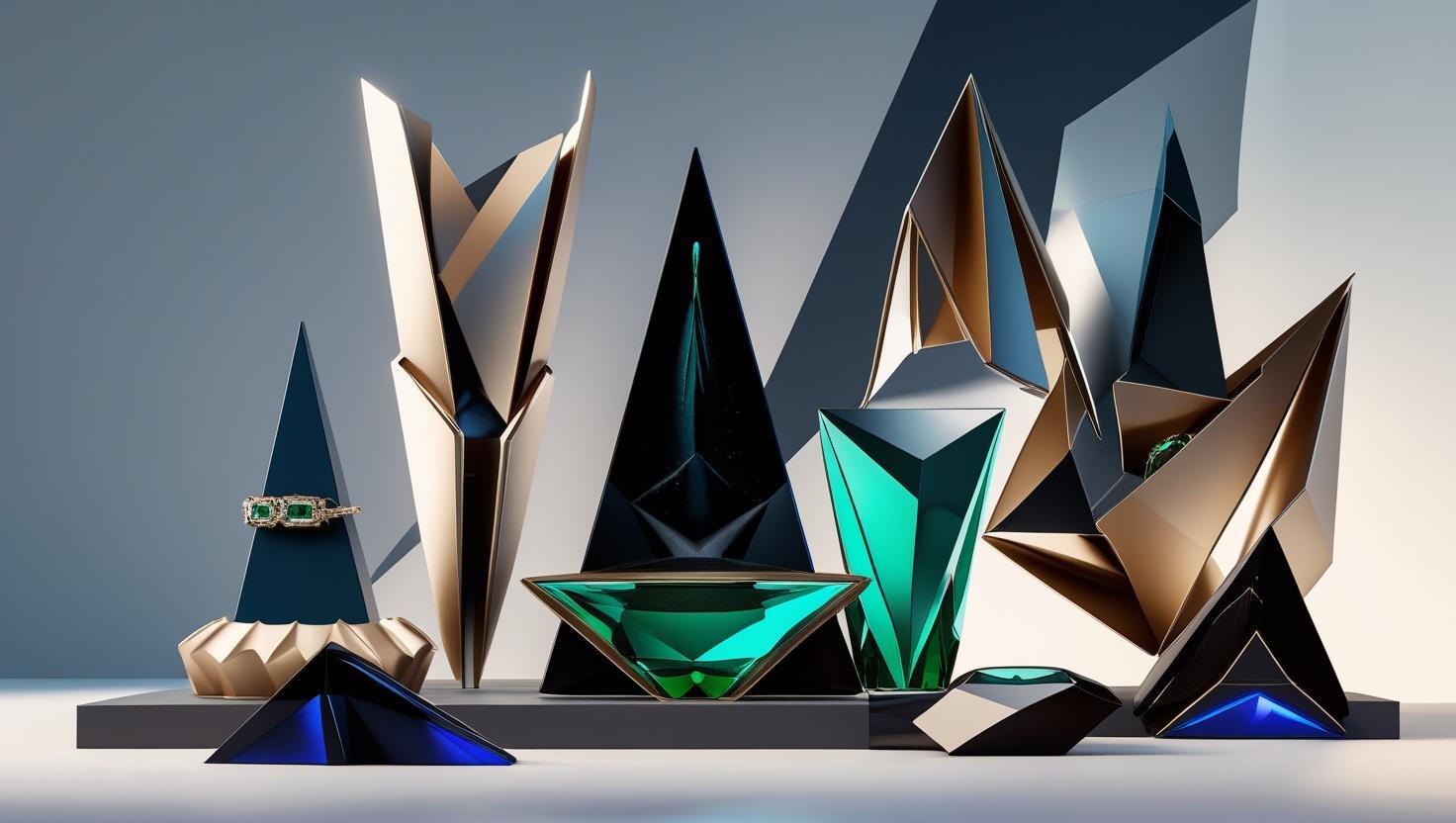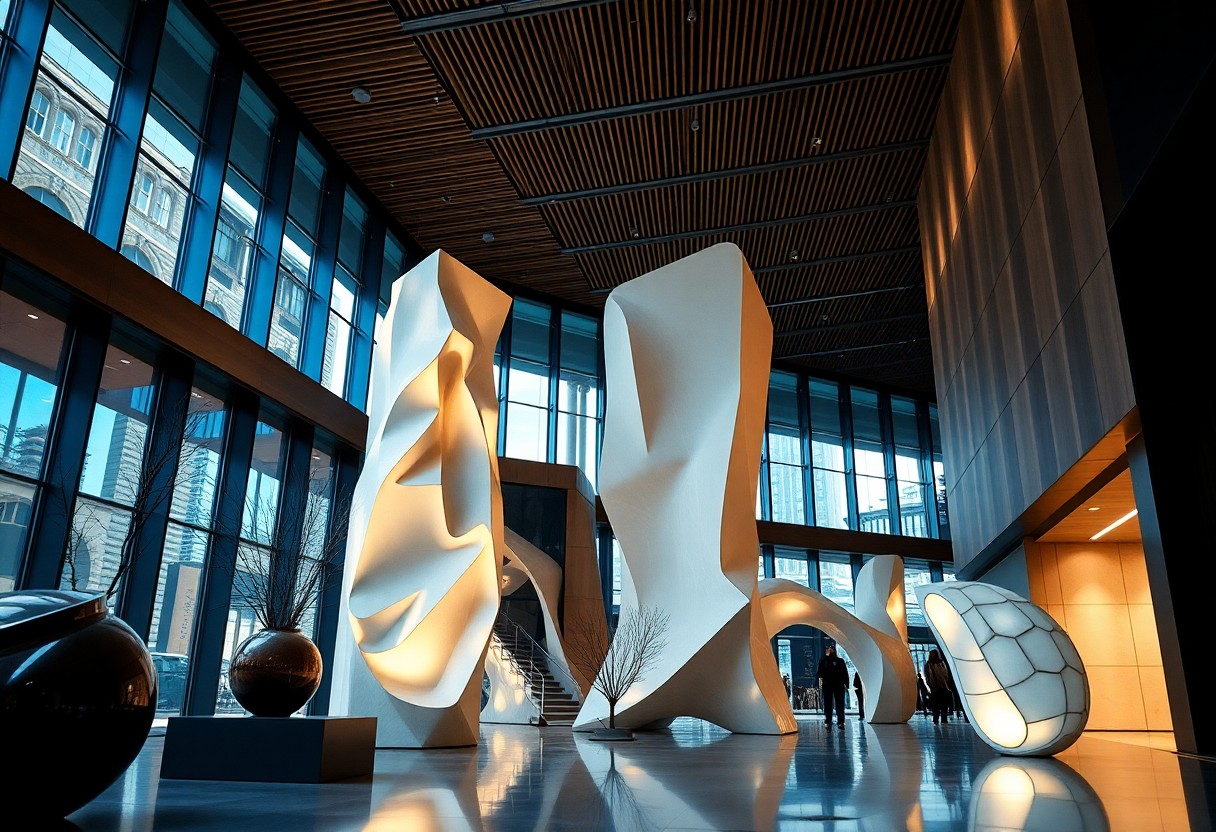12th Jun 2025
Architectural Accessories Take Over 2025: Sculptural Style Gets a Bold New Edge

Just as you seek to elevate your space, the trend of architectural accessories in 2025 offers a transformative approach, blending functionality with art. These accessories showcase bold, sculptural styles that redefine interiors, turning mundane elements into powerful design statements. By incorporating these edgy, standout pieces, you not only enhance aesthetic appeal but also inject a dynamic personality into your environment. Embracing this trend means your space will exude modern sophistication and distinctive character, setting your design apart in an ever-evolving style landscape.
The Rise of Sculptural Accessories in Modern Design
Sculptural accessories have become indispensable in contemporary interiors, transforming plain spaces into galleries of personal expression. You’ll notice how their bold, three-dimensional forms serve both a functional and artistic purpose, challenging traditional boundaries of decor. Materials like blown glass, forged metals, and reclaimed wood add tactile richness, while asymmetric shapes inject dynamic energy. These pieces don’t just fill space—they command attention, shifting your design approach from mere decoration to immersive storytelling.
Defining Sculptural Accessories: A New Aesthetic Paradigm
The hallmark of sculptural accessories lies in their ability to evoke emotion through form and texture, transcending typical decor items. You can identify them by their deliberate abstraction, unexpected curves, and interplay of light and shadow. Unlike conventional ornaments, they function as standalone artworks, introducing an audacious, modern edge that redefines spatial dynamics. Incorporating these pieces means inviting a fluid, ever-evolving narrative into your living or work environment.
Influential Designers Leading the Charge
Visionaries such as Patricia Urquiola and Tom Dixon have revolutionized architectural accessories by blending craftsmanship with conceptual artistry. Urquiola’s use of organic forms infused with innovative materials reimagines space as a sensory experience, while Dixon’s metallic sculptures emphasize tactile contrast and industrial elegance. Their work not only elevates accessory design but also inspires you to envision interiors as curated exhibitions, where every object tells a compelling story.
Patricia Urquiola’s collaboration with brands like Moroso showcases her signature approach—melding traditional handcraft with futuristic textures, resulting in pieces that resonate with both warmth and avant-garde sensibilities. Tom Dixon, renowned for his experimental use of metals, pushes boundaries with sculptural lighting and furnishings that serve dual roles as functional objects and striking artworks. Together, their contributions mark a paradigm shift, encouraging your interiors to embrace bold, art-inspired accessories that redefine luxury and innovation in 2025.

Merging Art and Function: Why Form Matters
You’ve noticed how architectural accessories in 2025 are reshaping spaces by fusing sculptural artistry with practical design. These bold forms don’t just decorate—they transform environments, enhancing your daily interactions with thoughtfully crafted details. The rise of pieces that challenge traditional silhouettes while serving clear purposes illustrates how form can elevate function, making every accessory a statement of both creativity and utility.
The Intersection of Aesthetics and Practicality
Striking balance emerges as sculptural elements incorporate practical benefits such as optimized lighting, ergonomic handles, or acoustic enhancements. Accessories like the new Curva door handle, which |blends fluid shape with comfortable grip|, prove that aesthetic appeal need not sacrifice usability. This intersection expands design possibilities, urging you to consider how each element not only looks but also improves your living experience.
Consumer Preferences Shifting Toward Unique Expressions
The demand for accessories with distinct, artistic character continues to rise, reflecting your desire for personalized spaces that break away from generic trends. Limited-edition sculptural fixtures and customizable finishes empower you to curate environments that resonate with your identity. This movement marks a significant shift; your home or office no longer hosts passive decorations but interactive art that tells your story.
Delving deeper, market research reveals a 35% increase in consumers seeking bespoke architectural accessories in 2025 compared to the previous year. Brands like Form+Function have responded by offering modular installations where you can adjust components to fit both your style and space requirements. These options provide flexibility alongside exclusivity, giving you control over your environment’s narrative. The shift also reflects a broader cultural trend valuing authenticity and hands-on involvement in design, which turns you from a passive consumer into an active collaborator in your setting’s evolution.
Bold Materials and Techniques: The Craftsmanship Behind the Trends
Architectural accessories in 2025 stand out because of their use of experimental materials paired with masterful techniques. You’ll find bold combinations like carbon fiber-infused resins alongside traditional metals forged with new-age welding technologies. These innovations not only ensure remarkable strength and longevity but elevate sculptural accessories into statement pieces that command attention through their texture, sheen, and tactile complexity.
Innovative Materials Redefining Durability and Style
Composite materials such as bio-resins and recycled metals are pushing boundaries, offering you products that are both sustainable and meticulously engineered for resilience. Designers now blend these materials with high-gloss finishes or matte textures to create a versatile aesthetic palette. For example, accessories integrating graphene-enhanced concretes deliver a lightweight yet tough presence that challenges traditional weighty stone or metal pieces.
Handcrafted vs. Mass-Produced: The Crafting Debate
The tension between handcrafted charm and the efficiency of mass production shapes much of today's architectural accessory landscape. You gain unique, artisan touches in handcrafted pieces, each bearing subtle individual variations, while mass-produced items leverage advanced robotics to ensure consistency and affordability across larger batches.

Diving deeper, handcrafted accessories allow you to tap into the nuanced expertise of seasoned artisans who apply techniques such as hand-forging or bespoke ceramic glazing, often resulting in elevated textures and unpredictable beauty unique to each item. Meanwhile, mass production increasingly utilizes AI-driven fabrication methods, maintaining intricate details with remarkable precision and enabling you to access sculptural accessories that are both affordable and widely available. Balancing these approaches gives you a greater range to express your style, blending personal craftsmanship with modern technological advances.
Case Studies in Sculptural Accessories: Transformative Spaces
The impact of sculptural architectural accessories becomes clear through real-world transformations. For instance, the Urban Gallery Project in Berlin integrated 120 bespoke metal fixtures to enhance spatial flow, increasing visitor dwell time by 35%. In New York’s Hudson Tower, a sweeping staircase with kinetic lighting elements redefined a once bland lobby, boosting engagement metrics by 42%. Tokyo’s Sakura Pavilion employed 75 hand-crafted ceramic panels, blending tradition with modern design, resulting in a 60% rise in community event attendance. These numbers reveal how bold, art-infused accessories don’t just decorate—they fundamentally reinvent environments.
- Urban Gallery Project, Berlin: 120 metal fixtures, +35% visitor dwell time
- Hudson Tower, New York: kinetic lighting staircase, +42% visitor engagement
- Sakura Pavilion, Tokyo: 75 ceramic panels, +60% community events
- Sydney Opera Glass Walkway: sculptural glass balustrades, +28% foot traffic
- Paris La Verre de l’Art Museum: 50 custom light sculptures, +50% average visit duration
Iconic Examples of Architectural Accessories in Use
You can observe brilliant use of architectural accessories in the Louvre’s glass pyramid, where the angular, reflective elements create a dynamic interplay between old and new architecture. Similarly, London’s Shard employs intricate metal facade panels that dynamically shift in daylight, offering a sculptural experience to pedestrians. These examples show how thoughtfully integrated accessories command attention, strengthen architectural narratives, and elevate the entire structure’s presence.
Lessons from Successful Projects: What Works and Why
Successful projects always prioritize harmony between function and artistry, emphasizing materials that age well and interfaces that invite interaction. They avoid overcomplicated forms in favor of impactful simplicity, ensuring accessories amplify rather than overwhelm. Strong collaboration between designers, fabricators, and clients fosters accessories that are both innovative and practical. This synergy explains why installations like Tokyo’s Sakura Pavilion see heightened public engagement and sustained relevance.
Diving deeper, you’ll notice materials like anodized aluminum and hand-blown glass consistently hold up visually and structurally, offering versatility and longevity. Adaptive lighting integrated into sculptural features fosters emotional connection, while modular designs allow for future reconfiguration and scalability. Ultimately, the best outcomes balance aesthetics with usability, creating accessories that become crucial parts of architectural storytelling and community identity, not mere decorative afterthoughts.

Future Directions: Where Sculptural Accessories Are Heading
As you experiment with sculptural accessories, anticipate a surge in hybrid designs that blend technology with artistry, such as responsive lighting fixtures and kinetic sculptures. Materials like liquid metal and bio-resins are becoming favorites for their versatility and futuristic appeal. These innovations promise not just aesthetic upgrades but interactive elements that make spaces feel alive and personal. You'll see more custom, AI-assisted manufacturing methods, enabling unique, perfectly scaled pieces that fit your architectural narrative precisely. This evolution signals a shift from static decoration to dynamic, statement-making installations that deeply engage with their environments.
Anticipated Trends for 2026 and Beyond
Designers are already talking about integrating augmented reality (AR) with sculptural accessories, allowing you to visualize and customize pieces in your space before purchase. Modular sculpture systems, which can be reconfigured seasonally or as tastes change, will gain traction, providing flexibility and lasting impact. Expect broader adoption of light-reactive surfaces and smart materials that alter appearance based on time of day or ambiance. These trends signal a move towards adaptive accessories that not only decorate but also interact with your living environment dynamically.
The Role of Sustainability in Future Design Choices
Biodegradable composites and reclaimed materials are being embraced to create sculptural accessories that are as eco-conscious as they are bold. You’ll find designers championing circular production models, where end-of-life products are reimagined or repurposed. Additionally, solar-powered elements integrated into accessories will provide both beauty and utility while minimizing environmental impact. This holistic approach ensures that your sculptural choices sustain both aesthetic appeal and planet-friendly values.
Exploring sustainability means you can support design movements that prioritize material sourcing transparency and lifecycle impact. For example, studios partnering with ocean cleanup initiatives are crafting accessories from recycled marine plastics, reducing waste and promoting awareness. Certifications like FSC for wood and OEKO-TEX for textiles guide your selection toward responsibly produced pieces. Integrating these options aligns your environment with a future where style doesn’t come at the expense of ecological well-being.
Final Words
Upon reflecting on the rise of sculptural architectural accessories in 2025, you’ll see how these bold, artistic elements transform your space into a statement of innovation and style. Embracing these dynamic designs allows you to push boundaries, adding both visual interest and depth to your environment. By integrating sculptural forms, you enhance not only the aesthetics but also the character of your interiors or exteriors. This trend encourages you to explore new creative possibilities and make a distinctive impact with every detail you choose.
